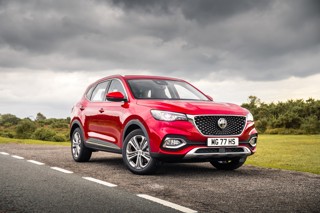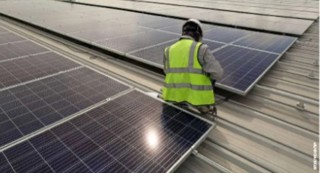As the remarketing sector faces a period of profound transformation, the insights shared at the Vehicle Remarketing Association’s Automotive Summit focussed on the need for agility, data-driven decision-making, and forward-thinking strategies.
The road ahead may be complex, but it is also ripe with opportunity, according to Louis Maxwell, senior insight manager, and Micha Byrne, performance manager, both from Auto Trader, who provided in-depth insights into the challenges and opportunities facing the car remarketing sector. Their discussion touched on evolving consumer demand, the transition to electric vehicles (EVs), and the supply dynamics reshaping the market.
Navigating Complexity
 Maxwell captured the complexity of the current market, stating, “2024 has been one of the most complex years for buying and selling used cars, and we expect it’s going to continue next year as well.”
Maxwell captured the complexity of the current market, stating, “2024 has been one of the most complex years for buying and selling used cars, and we expect it’s going to continue next year as well.”
Consumer demand remains healthy with Byrne pointing to the resilience of consumer interest: “Consumers, and their demand for cars, have never been stronger. We’ve had real wage increases, unemployment low, confidence has improved, and when we look at Auto Trader as a gauge of activity, site visits have been up 8% year on year.”
This robust demand is reshaping the used car market, particularly regarding speed of sale. “Stock has sold rapidly in 2024 as well, turning one day faster than the prior year,” Byrne said. For the supply-constrained three-to-five-year-old segment, “They’ve been selling four days faster.”
Despite ongoing challenges, Byrne noted the market’s overall strength, predicting “a total of 7.6 million transactions , which is 5% more than last year and just within 4% of economic levels.” Looking ahead, she forecast further growth: “We expect 7.7 million transactions in 2025, and there’s probably a little bit more upside scenario to this forecast as well.”
The Shift to EVs
The transition to EVs is one of the most transformative forces in the remarketing sector. Maxwell highlighted the declining prevalence of internal combustion engine (ICE) vehicles, stating, “We have 18.7 million petrol cars on the road in Great Britain, and every year going forward from now, that number is going to decline because of the ZEV mandate and the transition to electric.”
Over the next five years, Maxwell predicted that there would be 2 million fewer petrol cars on the road, vehicles that will never reenter the remarketing sector. This decline follows the earlier exit of diesel vehicles, with profound implications for operations and values.
The UK is leading Europe in EV adoption, however, bolstered by continued government tax incentives for the fleet sector and company car drivers. “There are 1.3 million EVs on the road as of the end of this year. In just three years, that’s going to hit 3 million,” Maxwell said. This growth is also impacting the remarketing sector, as defleeted EVs return to the used car market en masse.
Challenge of Residual Values
The rapid influx of EVs into the market has created volatility in residual values, however, with Maxwell acknowledging: “RVs have been under huge pressure over the last two or so years, down about 40% over that period.” However, this decline has made EVs more accessible to consumers. “About 3% of all used EVs were under £20,000 two years ago; now, a third of all used EVs are under £20,000.”
Maxwell highlighted shifting dynamics: “Two years ago, a three-year-old Tesla Model 3 was £20,000 more expensive than a BMW 3 Series. Now they’re at price parity.”
These changes are fuelling demand as Byrne noted: “Buyers have clocked onto these low prices and low running costs, and we saw the used EV market take another big step forward, with demand reaching record highs and interest increasing by over 50% year on year.”
Fast Growth in Used EV Market
 EVs are becoming a dominant force in the used car market. Byrne, describing their performance, stated: “Throughout 2024, used EVs have been the fastest-selling fuel type in the market.” She highlighted the strong turnover rates of three-to-five-year-old EVs: “In October, they sold every 19 days, which is really fast.”
EVs are becoming a dominant force in the used car market. Byrne, describing their performance, stated: “Throughout 2024, used EVs have been the fastest-selling fuel type in the market.” She highlighted the strong turnover rates of three-to-five-year-old EVs: “In October, they sold every 19 days, which is really fast.”
Importantly, prices for used EVs are stabilising and even recovering. “For the first time in two years, used EV retail prices have increased. In October, they rose by 2.1%, and they had already been moving in line with the overall market several months prior.” This improvement reflects growing confidence among both buyers and sellers.
Shifting Brand Dynamics
Maxwell turned attention to the competitive landscape, pointing out the growing number of brands in the market: “There are 17 more brands selling new cars in the UK than back in 2019.” This increased competition has impacted traditional manufacturers with the likes of Ford, Mercedes, and Vauxhall losing more than 2% market share since 2019.
These shifts have long-term implications for remarketers as Byrne warned: “The brands that we see at auction houses, on retail forecourts, and online marketplaces will be very different.” Ford’s declining market share alone translates to 730,000 fewer sub-five-year-old vehicles on the road compared to 2019, a massive 54% decline.
This shrinking supply presents a significant challenge for retailers who stock primarily from legacy brands. Byrne advised, “You might want to consider turning to a new brand, which means understanding the products, the pricing, and the proposition.”
Supply Constraints Impact
The pandemic’s impact on new car production continues to reverberate. “During the 2020–2022 period, we obviously lost 2 million new car sales because of COVID,” Maxwell explained. “Those cars that weren’t produced mean that today we have a lack of three-to-five-year-old cars in the parc.”
Retailers have adapted by turning to older vehicles. Byrne noted, “Every retailer type is now stocking more five-to-ten-year-old cars on their forecourts.” However, he warned that this segment is also facing a supply crunch: “These vehicles are going to start to disappear next year and the year after as the COVID supply shock starts to impact this age as well.”
Optimising Margins, Pricing
Retail pricing remains a critical focus for the industry. “It’s been a tricky year for values,” Byrne acknowledged. “Retail prices are still back year-on-year by around 5%.” However, she expressed optimism about 2025 saying there remained room for retail values to rise further, especially in the middle of the market where supply is so constrained.
Maxwell emphasized the importance of smart pricing strategies at a time where costs are rising and retailers are losing revenue channels.” Some of the really fast speed of sale that we've seen this year has come at the cost of margins,” he noted. “So if all the underpriced stock that had a high retail rating and sold quickly had been priced to market, then on any given day, retailers would have had an additional £26 million.”
ICE: A Steady Performer
 Speaking at the VRA summit, Andrew Webb, head of sales at the valuations platform Brego, offered a detailed analysis of the relationship between the EV market and internal combustion engine (ICE) vehicles, noting the consistent performance of the latter.
Speaking at the VRA summit, Andrew Webb, head of sales at the valuations platform Brego, offered a detailed analysis of the relationship between the EV market and internal combustion engine (ICE) vehicles, noting the consistent performance of the latter.
Webb pointed out that the value and sales cycles of ICE vehicles have seen none of the dramatic shifts that have characterised the EV market. “They remain a reliable choice for buyers and sellers alike,” he explained.
EV Depreciation Patterns
One of the central themes of Webb’s discussion was the marked depreciation of EVs which have been strikingly different from those of ICE vehicles attributed to a combination of increasing supply and lagging demand, which has created a surplus in the market.
“Unlike EVs, ICE vehicles are not experiencing the same level of volatility. Their value trends remain much steadier, providing reassurance for those in the remarketing space,” Webb explained.
“Throughout all the turmoil in the EV market, on all the measures that we have, ICE vehicles have maintained a consistent approach. We saw a massive correction in 2023 but we didn't see either any improvement or a drop off in any of the measures in ICE vehicles. And after the correction, EV has dropped back in sync with ICE. The proportion of dealers selling ICE vehicles and the proportion selling EVs has remained constant as well.”
Role of Government Policy
Webb said that the transition to EVs would continue to be heavily influenced by government policies. “Policies are absolutely central to the adoption of EVs,” he asserted.
However, Webb also highlighted the need for a more decisive shift to accelerate EV adoption. “We need a shock to move people away from ICE vehicles and towards EVs,” he said. He suggested that without a significant push - whether through stricter regulations or enhanced incentives - many consumers would continue to favour the familiarity and reliability of ICE vehicles.
Future Outlook for ICE
 Looking ahead, Webb predicted continued stability for ICE vehicles in the near term. “We anticipate that ICE vehicles will maintain their consistent performance,” he stated, noting that their depreciation rates and sales dynamics are unlikely to change significantly in the immediate future.
Looking ahead, Webb predicted continued stability for ICE vehicles in the near term. “We anticipate that ICE vehicles will maintain their consistent performance,” he stated, noting that their depreciation rates and sales dynamics are unlikely to change significantly in the immediate future.
He attributed this resilience to the enduring demand for traditional vehicles, especially as EV infrastructure remains underdeveloped. “For many consumers, ICE vehicles still represent the most practical and affordable option,” Webb remarked.
Despite the challenges, Auto Trader’s Maxwell expressed optimism about the future, highlighting the ongoing importance of car ownership: “There are 33 million cars on the road, which we expect to grow over the next couple of years.” To meet the challenge, however, he urged the industry to embrace change and innovation: “Whether it’s navigating EV adoption, managing supply constraints, or competing in a crowded marketplace, those who innovate will thrive.”




















Login to comment
Comments
No comments have been made yet.